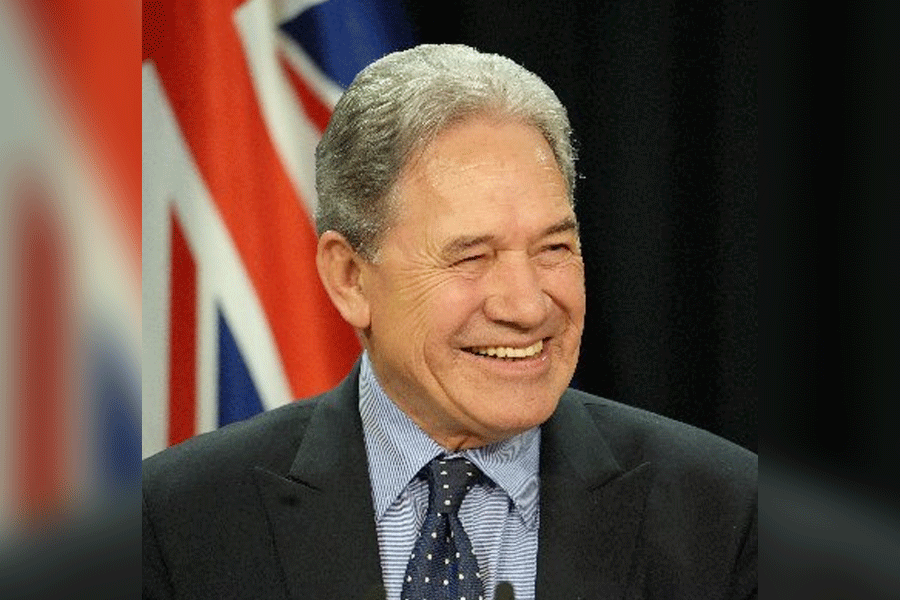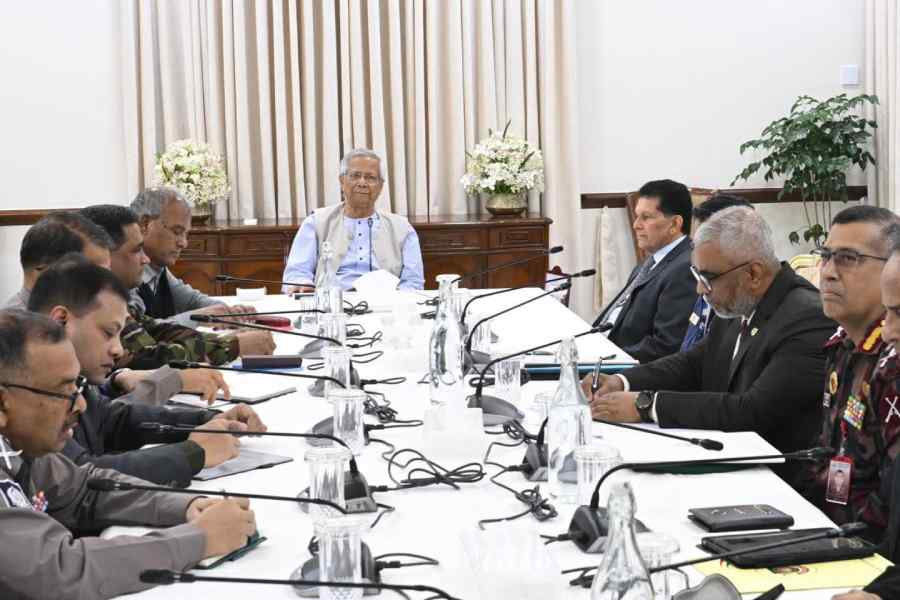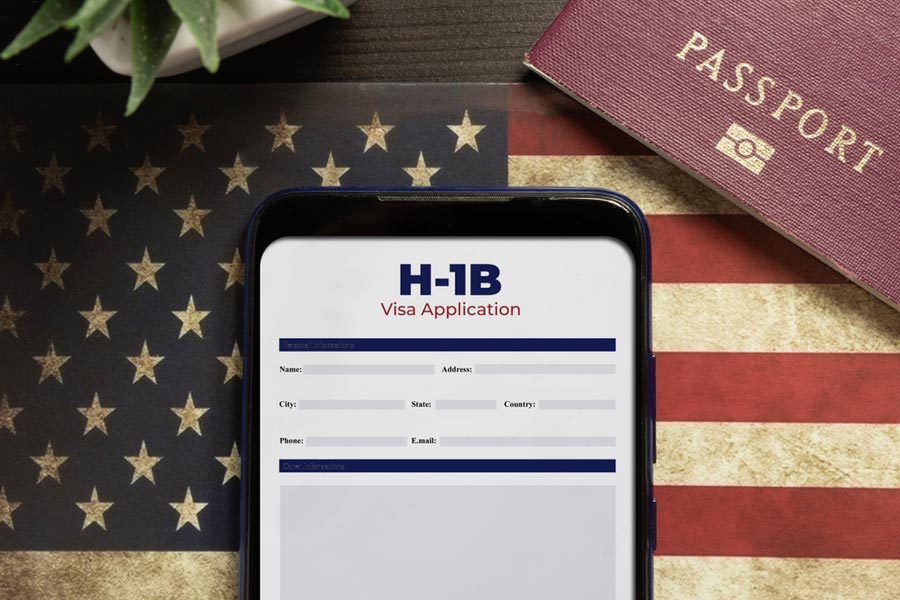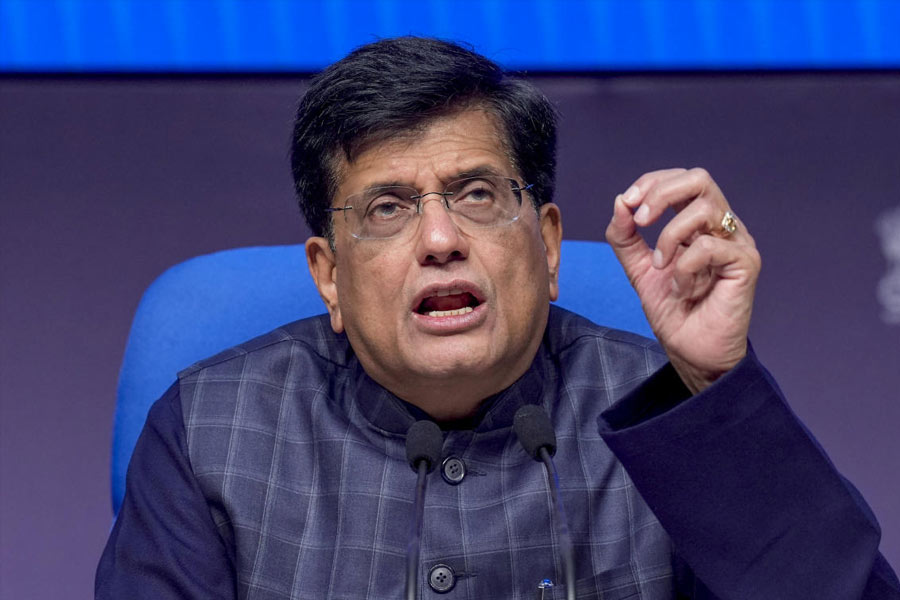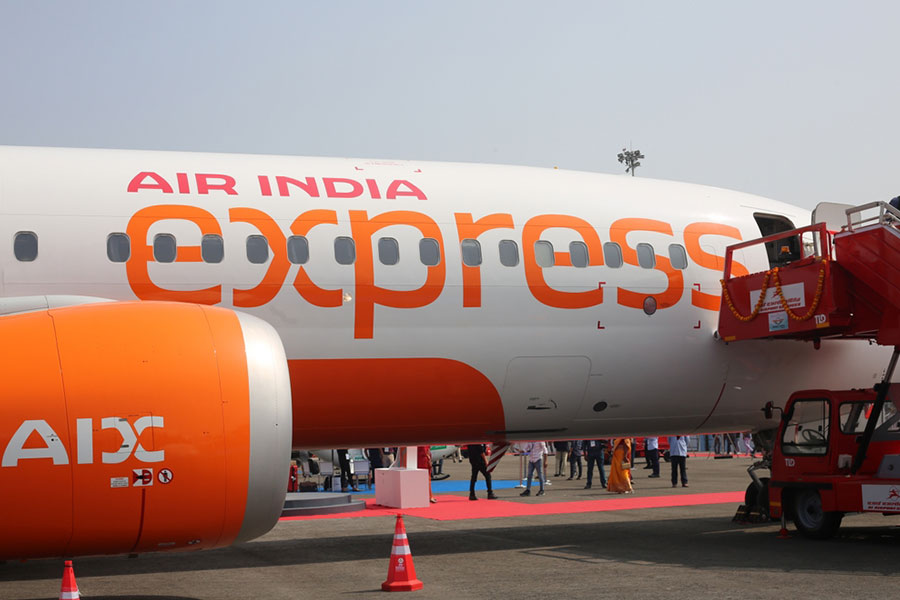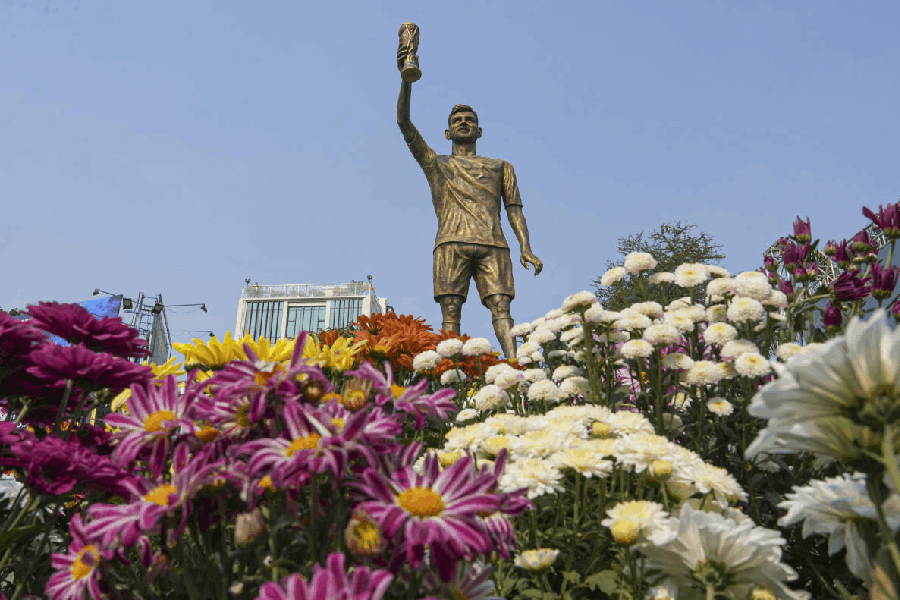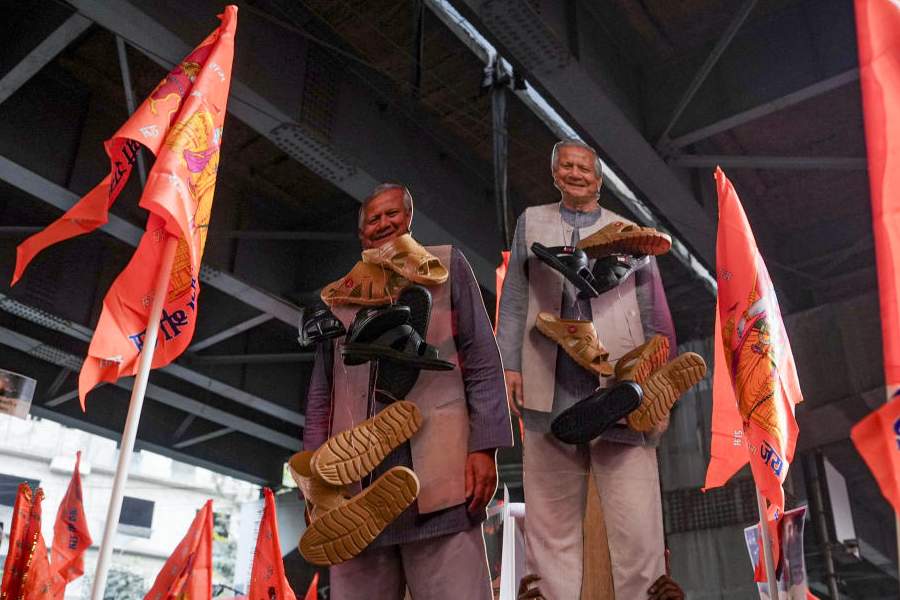 Actor Chiranjeevi was hard pressed for time. Too busy to tour every part of the state during the elections, the Praja Rajyam Party (PRP) leader sat in Hyderabad and interacted with women members of self-help groups in Rajahmundry district, 500 km away, by video conferencing with them. N. Chandrababu Naidu of the Telugu Desam Party (TDP) did something similar. He touched base from Hyderabad with voters in Kuppam district, 700 km away.
Actor Chiranjeevi was hard pressed for time. Too busy to tour every part of the state during the elections, the Praja Rajyam Party (PRP) leader sat in Hyderabad and interacted with women members of self-help groups in Rajahmundry district, 500 km away, by video conferencing with them. N. Chandrababu Naidu of the Telugu Desam Party (TDP) did something similar. He touched base from Hyderabad with voters in Kuppam district, 700 km away.
Mumbaikars within an 80-metre radius of Wi-Fi and Bluetooth hotspots got alerts on their phones asking if they wanted to receive a message from the Bharatiya Janata Party (BJP). If they agreed, they could download BJP ringtones, photos, videoclips and slogans. The party notched up 12 lakh pushes through April, when it ran this campaign.
 |
| ALL IN VAIN? The tech-savvy BJP’s war room in Delhi. Pic: Rajesh Kumar |
Welcome to India’s first e-election. With poll expenses under the Election Commission scanner and the searing summer heat keeping everyone indoors, political parties and candidates took the help of technology like never before. And while the conventional ways of campaigning continued, they bombarded voters with text messages and email, held video conferences, wrote blogs and bonded on social networking sites.
The TDP and the BJP have been the biggest and the most innovative users of technology, with the former hosting an Internet radio with daily news bulletins on happenings in the party, press conferences and highlighting the failures of the state Congress government. It also had a payment gateway on its website to collect donations from US-based Andhra techies, though foreign exchange regulations prevented it from getting this money.
Things have certainly come a long way since 2004, when voters were greeted with “Namaskar, main Atal Behari Vajpayee bol raha hoon” on their landline and mobile phones. Some candidates sent out a few text messages and others had individual websites, but technology was largely absent in the last general election. This time, almost every party went hi tech, notes Vineet Kaul, senior vice president, business, of value-added services provider One97 Communications, which has several political parties as its clients.
Websites — despite new ones such as lkadvani.in being launched and old ones being dusted up on election eve — are now passé. Taking a leaf from Vajpayee, candidates across parties called up voters in their constituencies and played taped messages asking for votes. SMS was the most used tool, not just to canvass for votes, but also to inform voters about rallies and location visits by candidates. Ditto for email. The Congress sent three email blasts to 82 lakh people, with highlights of the manifesto and other important messages.
 All this has raked in the big bucks. Kunal Bajaj, managing director of research firm BDA Connect, estimates that the use of mobile technology alone could have generated Rs 50 crore of business by May 16. Companies providing these services wouldn’t divulge any information on revenues or share of election work in their total business, but confirmed that this figure could well be realistic.
All this has raked in the big bucks. Kunal Bajaj, managing director of research firm BDA Connect, estimates that the use of mobile technology alone could have generated Rs 50 crore of business by May 16. Companies providing these services wouldn’t divulge any information on revenues or share of election work in their total business, but confirmed that this figure could well be realistic.
What’s driving all this? The near-ubiquitous reach of technology, for starters. The number of mobile subscribers rocketed from 37 million in December 2004 to 288 million in December 2008. Suresh Prabhu, Shiv Sena candidate from Ratnagiri-Sindhudurg in Maharashtra and former power minister in the NDA government, notes that every fourth voter in his predominantly rural constituency has a mobile connection.
There are close to 50 million Internet users now, compared to around 4 million in 2004. “Sixty per cent of Internet users are from eight big cities,” admits Prodyut Bora, head of the BJP’s information technology cell, “but these cities account for 50 Lok Sabha seats.” The Internet is also a highly effective way of reaching out to young voters. “Close to 30-40 per cent of them access the Internet. You need to relate to them in a way they want to be related to,” says Bajaj.
Aditya Singh, a 20-something Delhi student, was taken by surprise when he was surfing the website of a Mumbai-based newspaper at home. He found an advertisement for Jagdish Mukhi, the BJP candidate from his area, the West Delhi constituency, popping up on his screen. “I would have expected the ad for a national or Mumbai candidate.”
The youth factor, which is expected to play a major role in this election, is certainly driving the technology thrust. “Young people find technology cool and admire people using it,” says Atul Mukhi, Jagdish Mukhi’s son. Maybe that’s why industrialist L. Rajagopal, Congress Lok Sabha candidate, had young campaigners with laptops going around colleges and libraries in the Vijaywada constituency, while the TDP Lok Sabha candidate from Kadapa, tech-entrepreneur Palem Srikant Reddy, organised 30 laptop-sporting teams to go into the constituency’s interiors to tell voters how he could generate more IT jobs.
Technology and the services delivered on it have also become increasingly sophisticated. Internet-enabled phones are far more common and affordable now than in 2004. If Aditya Singh could see advertisements for a candidate in his constituency on an unrelated site or Indians accessing foreign newspapers saw L.K. Advani ads, it was made possible by a tool called IP (Internet Protocol) profiling, which allows the location of surfers to be identified on the basis of a unique number that every computer linking to the Internet has.
In 2004, interactive voice response technology, which automates telephone interactions, was only being used by call centres. It was deployed in a big way in Election 2009. Centres were set up in the constituencies of BJP candidates Kirit Somaiya and Ram Naik in Mumbai. A toll-free number was advertised and people calling in were given various options — information about their polling booths or their candidate. This helped the party measure the reach of a campaign, says Rajiv Naik, in charge of the BJP’s IT initiatives in Goa, where a toll-free number was used to enlist support and volunteers. “Earlier lakhs were spent without knowing what the impact was.”
The heavy use of technology isn’t just a meaningless fad, but helps overcome many of the limitations of conventional campaigns. For example, entry is restricted in the growing number of gated residential colonies in cities, notes Vinit Goenka, in charge of the BJP’s IT initiatives in Maharashtra. Even if a candidate’s supporters do gain entry, the voters may not be present. “Sending them an email or an SMS ensures that it reaches them.”
Technology, adds Prabhu, multiplies efforts at less cost and time. Candidates or parties are unwilling to talk about expenses incurred —some have been borne by the party, and some by candidates. Atul Mukhi, for instance, produced and distributed CDs with a slick biopic on his father. Each CD cost him Rs 3.50 — half the cost of a booklet with double the appeal. “I had limited finances and had to use it in the most effective way,” he says.
The BJP candidate from AP’s Amberpet assembly constituency, G. Kishan Reddy, also handed out CDs, and organised PowerPoint presentations in his constituency. Other candidates in his state sent teams around with laptops carrying profiles of them and their work, saving the cost of printing and distributing millions of leaflets.
One SMS costs between 2 paise and 5 paise, depending on the volume (the more the messages in a shorter period, the cheaper the cost). Even a humble postcard costs 50 paise, Prabhu points out. Then there’s the indirect cost of printing a message (printed postcards cost Rs 6), writing addresses and posting them. It may cost 2 paise to print a flyer but large numbers of workers need to be deployed to distribute them. “I can send out an equal number of emails or SMS-es with just a few presses of a button,” says the BJP’s Goenka.
The targeting is more bang-on, since the messages reach the person they are meant for. When someone’s phone beeps, he checks the message. And he sees it even if he deletes it immediately. “The eyeballs are guaranteed,” says Kaul of One97 Communications.
There’s a downside, though. Handsets, notes Abhijit Saxena, CEO of Netcore Solutions, which handled the mobile campaign of the BJP, are programmed only for the English script, which means the SMS is lost on those who are not familiar with it.
Tech-driven campaigning is only expected to increase. “The Internet has been a limited player in these elections but will be a major player in the future,” says Vishvijit Prithvijit Singh, chairman of the Congress’s computer department.
But will it pull in the votes? “If people are with you, everything works. If not, nothing works,” says Prabhu. Clearly offline is as important as online.


